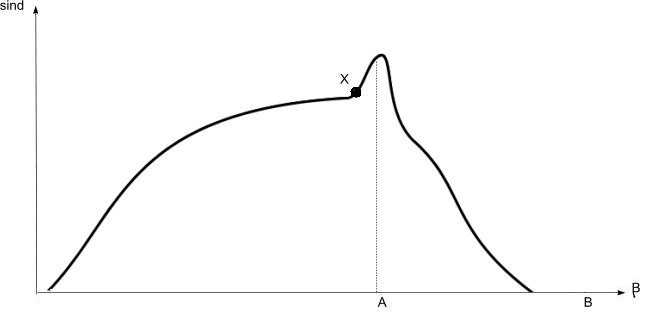While the particle sinduklyarno and paralukulyarno. In each universe, time flows differently, and is given by
t = ß * sind / p 2 * m (1)
where
ß -value burnous in this universe,
sind-sinduklyarnost the speed of propagation (division) chstits time
ρ-paralukulyarnost angle of inclination of the axis of time relative to the center of the universe,
m-particle mass time (can be changeable value, see below)
If you do not take into account the very low rate of anomalies in time, then distribute it possible to describe these postulates:
When sind = 0, the particles have not covered, time as such does not exist. However, due to burzon unstable particles and the universe continues to exist and develop. Formula 1 for such a postulate is not applicable
When sind ≥ 1 particles are distributed (normal), time flows uniformly and continuously
If 0 ≠ sind <1 particles propagate slowly (perhaps stepwise), time
perceived uniformly retarded or intermittently
When sind>> 1 particles extends with growing speed, time perception accelerated.
In the fission particles with growing speed at some point in X there is a "breakdown" and the particles slow motion, and then goes into another phase (see Figure 1).

Figure 1 Plot of AB-section of a negative time
Just out of Formula 1 should be that the transition time into a negative phase, the mass also becomes negative.
In 1957, Hermann Bondi suggested that the mass can be both positive and negative.
From Newton's second law:
It is seen that an object with negative inertial mass will accelerate in the direction opposite to that in which it was pushed, which may seem strange.
If we study the inertial mass mi , passive gravitational mass mp and active gravitational mass ma separate, then the law of universal gravitation Newton takes the form:
ТThus, objects with negative gravitational mass (and passive and active), but with positive inertial mass would be repelled by positive active mass and attracted negative active mass.
Minus-matter "should be gravitationally repel any other body, that is not only negative but also positive mass (whereas the ordinary matter, by contrast, has always attracted the matter of both species).Further, under the influence of any force until the force of inertia, it must move in the opposite direction to the vector of this force. And, finally, its total energy as Einstein's bound to be negative.
Take gravity. If two normal bodies attract and approach each other, and two anti-masses repel and disperse, then what happens when the gravitational interaction between masses of different signs?
· Let this be a simple case: the body (say, a ball) of a substance with negative mass-M is located behind the subject with equal magnitude positive mass + M. It is clear that the gravitational field of the ball pushes the object, while she attracts the ball. But this implies that the whole system will move in a straight line connecting the centers of the two masses, with a constant acceleration, proportional to the strength of the gravitational interaction between them!
· Same thing with the total kinetic energy of the system. While the body lay, it is zero. But for whatever rate they may move, nothing changes: the negative mass of the ball in full accordance with the formula (-M) *V* 2 / 2, accumulates a negative kinetic energy, which accurately compensates for an increase of positive energy object.
If all this sounds absurd, it may be "knocked out like cures" - try to prove an absurdity to others? Ever since the sixth grade, we know that the center of equal point masses (positive, of course) is in the middle between them. So, how do you like the following output? Center for Equal masses of different signs point is though on a straight line through them, but not inside, but outside of connecting segment at the point ± ∞ ?
What can happen when physical contact between two identical particles of matter with a plus-and minus-mass? With the "usual" anti-matter is clear: the annihilation occurs with separation of the total energy of both bodies. But if one of two equal masses is negative, then their total energy, as we have just learned, is zero. And that's what happen to them in real life - it is a question that goes beyond serpatic’s mendrotology.
R. Forward, in his article "Rocket engine on the matter of negative mass," "designed" and the engine is already on the negative mass, which can take us anywhere in the universe for any acceleration, which we define. It turns out that it needs only ... a couple of good springs (all interactions "negative mass" with the usual means of elastic force, of course, also detailed calculation).
· So, put the negative mass equal to the mass of the rocket, in the midst of its "engine compartment. If you want to fly forward, stretch the spring from the rear wall and hook it onto the body of negative mass. Immediately because of its "perverse" inertial properties it does not rush to wherever it is pulled, and in the opposite direction, carrying a rocket with an acceleration proportional to the strength of spring tension.
· To stop the acceleration, enough to unhook the spring. And to slow and stop the vehicle must use a second spring attached to the front of the engine compartment.
Perhaps in the near future boundary between Trambroid worlds and our universe will ajar , and then that will be useful, these engines. And as will be proved many theories. We can only wait and watch discoveries figures frontier research and development progress in general
On materials Ponkrata Borisova "Negative mass: a free flight to infinity", Wikipedia, and works by Ulyanov in serpatic mendrotology